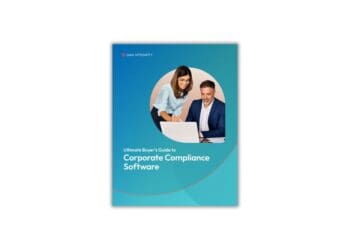The COVID-19 pandemic has left financial institutions to face many of the same AML risks as pre-pandemic, but now under largely different circumstances. LexisNexis Risk Solutions’ Leslie Bailey examines what these organizations must do now to effectively weather the storm.
The COVID-19 pandemic left financial institutions (FIs) without a blueprint. FIs must now grapple with the challenge of navigating their customers through an unprecedented time while adapting their internal risk management, compliance and anti-money laundering (AML) processes to a work-from-home setting. This is certainly an unprecedented task, with FIs shifting entire operations to the digital space without relaxing their oversight procedures in the midst of stimulus programs like the Paycheck Protection Program (PPP). The sheer number of online transactions, new online users and new devices has increased, which makes identifying risk harder.
FIs now face an increasing demand for faster underwriting, financial crime investigations, customer identification and onboarding processes. They must also ensure that their systems operate as efficiently and securely as they did in the pre-COVID era while also identifying and responding swiftly to new potential criminal tactics and perpetrators of financial crimes during the lockdown and as the economy reopens.
The present environment is certainly challenging, but the risks that businesses must confront have not changed substantially. FIs face the same concerns as they did before, although the pandemic has intensified their concerns. Budget pressures, risk prioritization, a highly regulated industry and the shift from face-to-face to digital transactions are simply the new normal. The difference is that FIs are also tracking an abundance of new financial crimes during the economic recession.
FIs must accelerate the strategic initiatives they have in the pipeline and can start by leveraging technology and business risk attributes to automate processes — securely and remotely — as a response to an increased workload during COVID-19. FIs will be able to allocate brainpower and successfully shift from a fast-response mode into a tactical, decision-making mode if they incorporate technology and enhance risk solutions appropriately.
COVID-19 Underscores the Importance of Strategic Budgeting
FIs consistently face pressure to responsibly allocate funds to compliance in every segment of their business. The AML and financial crime compliance landscapes are increasingly complicated by rigorous regulatory demands, stringent sanctions requirements non-bank payment providers and now by a global pandemic. A recent pre-pandemic LexisNexis Risk Solutions survey on the cost of AML compliance found that annual AML compliance costs for the United States and Canadian FIs totaled $31.5 billion in 2019.
Compliance costs are on the rise, and financial crimes never cease – certainly not only because of a lockdown. Ilias Chatzis, the Chief of the United Nations Office on Drugs and Crime (UNODC)’s Human Trafficking Section said in May, speaking of human trafficking, “traffickers may become more active and prey on people who are even more vulnerable than before because they have lost their source of income due to measures to control the virus.” A wide variety of unique risks have emerged from individuals, transactions and contact channels during the pandemic. Trafficking is just one example of the additional risk at play. FIs must be wary not only of AML crimes, but also crimes like securities-related fraud and bribery and corruption.
COVID-19 has amplified the need for further efficiency to maximize the value of every dollar FIs spend. Each global region has its own unique risks and challenges with money laundering and financial crime compliance, and the current crisis exacerbates this by affecting countries differently. One practical solution is for FIs to reorient their budgets to accelerate technology initiatives and business risk attributes to scale and automate rote processes. Utilizing proper compliance technologies can reduce compliance labor costs, and shifting compliance professionals’ focus from manual tasks to substantive decision-making can improve employee morale and may make things easier during remote working. Organizations can actually decrease both the cost of compliance per full-time equivalent (FTE, the labor component) and the opportunity costs associated with onboarding friction and lost business. Keeping FTE costs lower is essential to profitability since labor tends to account for significantly increased expenses year-over-year.
Risk Prioritization to Better Address the Pandemic
Risk prioritization is much more complex than a simple ranking of the potential dangers of individual transactions. FIs examine dollar amounts, characteristics and behaviors holistically to identify lone bad actors as well as grand corruption schemes. This era is no exception to the need for a risk-based approach; again, this approach supports FIs in adopting flexible policies and maximizing their technological potential.
A layered approach to financial crime compliance technology is crucial to facilitating a more cost-effective, efficient compliance approach, as well as one that provides benefit to the larger organization. Financial crime compliance investments can benefit other functional units, where the organization has a fuller understanding of customer risks and preferences. There can be a direct cost benefit when layering financial crime compliance technology.
The assessment of a dispute of a $1,000 stimulus check is a common example during the COVID-19 pandemic. This single transaction is low risk in itself, but FIs need to use technology more widely to determine if 20 individuals seeking to negotiate $1,000 checks are somehow linked together through digital identity attributes, addresses or behavior.
Government authorities use this same leveraging of business risk attributes to identify groups of illicit financiers working together. Several government cases arose from bank detection of activities following the implementation of the PPP established by the Coronavirus Aid, Relief and Economic Security (CARES) Act. Fraudsters used both newly opened and newly closed businesses in an effort to claim eligibility for stimulus funds. FIs further observed a pattern of bad actors claiming ownership of businesses with which they had no affiliation.
The CARES program assigned the first $349 billion to certain industries — construction, manufacturing, health care and food service — where FIs may see a rise in fraudulent activity. Other industry-specific fraud will likely appear through businesses that expanded their e-commerce presence during the pandemic without necessarily running any anti-crime best practices. FIs need to focus on targeted risk categories and verify elements of the customer risk profile, including criminal history, high-risk professions, high-risk industries, wealth and geographic risk.
The Shift from Face-to-Face to Digital Interactions
The rise of remote working and business closures accelerated the shift from human to digital interaction. FIs are also detecting a steady movement away from face-to-face activity, highlighting the need for institutions to revisit how they identify and track suspicious online engagement.
FIs are training branch personnel to look out for indicators and physical cues that may suggest fraudulent activity during in-person interactions. FIs will have to harness intelligence related to devices, locations, identities and past behaviors to better track suspicious activity online. Incorporating behavioral biometrics tools into the AML solution set can offer FIs a wealth of knowledge about their end users across digital platforms. Other critical technological enhancements include watchlist screening, alert remediation and strong data management to ensure complete initial screenings, ongoing monitoring across the customer journey and comprehensive streamlined processes for compliance.
Weather the Storm While Positioning for Post-Storm Success
The COVID-19 pandemic presents an opportunity for criminals to commit extraordinary amounts of financial crime and naturally increases the risk of money laundering. FIs must adapt their policies and their responses to changing consumer behavior in the wake of COVID-19. FIs will face increased hurdles in their operational efficiency to identify and track illicit activity when the pandemic subsides if they fail at this. Luckily, there seems to be recognition that financial crime compliance initiatives can provide broader benefits to the business.
FIs have the ability to weather the current storm and to position themselves for future success by incorporating the right multi-layered technology and AML prevention approach. As criminals become more sophisticated, a more sophisticated approach is required to fight them.



 Leslie Bailey is the senior director of business services for
Leslie Bailey is the senior director of business services for 










